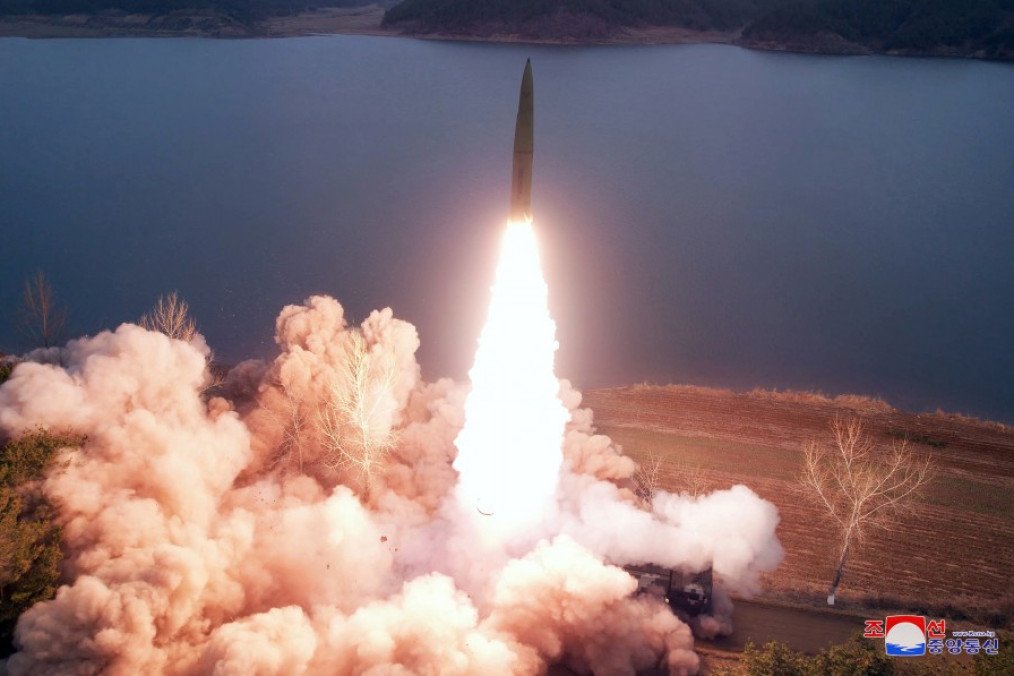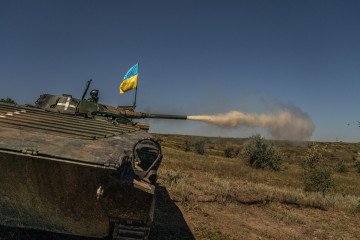- Category
- Latest news
North Korean Missiles Fired by Russia in Ukraine Show Improvement in Accuracy

Since late December, ballistic missiles launched by Russian forces at Ukraine have shown a marked improvement in accuracy, now hitting their intended targets within a range of 50 to 100 meters, according to two senior Ukrainian sources who spoke with Reuters on February 6.
This marked improvement in precision suggests that Pyongyang is using the war in Ukraine as a testing ground for its missile technology, raising concerns from Washington to Seoul over the growing military partnership between Russia and North Korea.
A senior Ukrainian military source, speaking on condition of anonymity, described a “marked improvement” in the precision of more than 20 North Korean missiles fired at Ukraine in recent weeks. A second source, a senior government official familiar with the matter, confirmed these findings.
Yang Uk, a weapons expert at Seoul’s Asan Institute for Policy Studies, warned that such advancements could enhance North Korea’s ability to threaten South Korea, Japan, and even the United States, while also increasing the likelihood of selling upgraded weapons to rogue states or armed groups.
“That can have a major impact on stability in the region and the world,” Yang said.
North Korea rapidly advanced its military programs in recent years, developing short- and intermediate-range missiles that it claims can carry nuclear warheads. However, Ukraine represents the first real-world combat scenario for these new weapons.
Earlier in the war, North Korean missiles exhibited an accuracy range of 1-3 kilometers, but recent strikes have demonstrated a much narrower range of 50-100 meters, according to forensic analysis of missile debris by Ukrainian forces.
Although the debris did not reveal clear design changes, sources suggest the increased accuracy could result from better navigation systems, steering mechanisms, or improved targeting data supplied by Russia.
Russia began firing North Korean K-23, K-23A, and K-24 short-range ballistic missiles toward Ukraine at the end of 2023 and has since launched around 100 missiles, the military source said.
Ukraine also alleges that millions of artillery shells and thousands of North Korean troops have been funneled to support Russia’s war effort.
The partnership between Moscow and Pyongyang deepened when Russia’s defense minister visited North Korea in 2023.

The two nations signed a “Comprehensive Strategic Partnership”, and South Korean officials have suggested that Russia may be providing missile parts, financial support, and even space technology to North Korea in exchange for weapons and troops.
While North Korean ballistic missiles represent a small fraction of Russia’s overall missile strikes, they carry a larger payload of up to one tonne and have a range of up to 800 km—outperforming the Russian Iskander-M missile, which has a smaller payload and a range of 500 km.
The increasing precision and destructive potential of these weapons could destabilize not just the region but global security frameworks.
“North Korea is getting something,” Yang said, implying that Russia’s support could help Pyongyang expand its military capabilities even further.
Earlier, North Korea’s General Bureau of Missile Development announced the successful test launch of a new hypersonic ballistic missile.




-72b63a4e0c8c475ad81fe3eed3f63729.jpeg)

